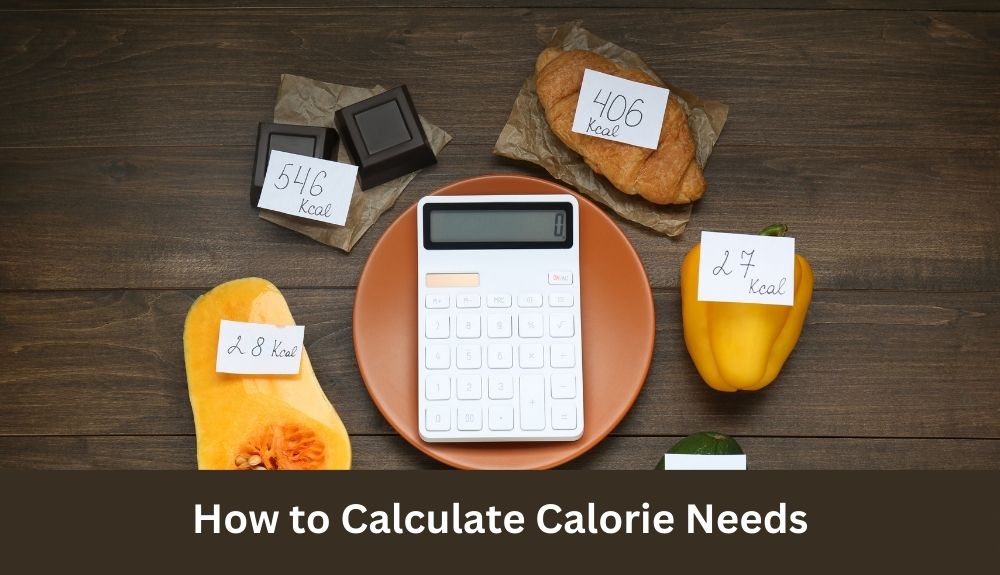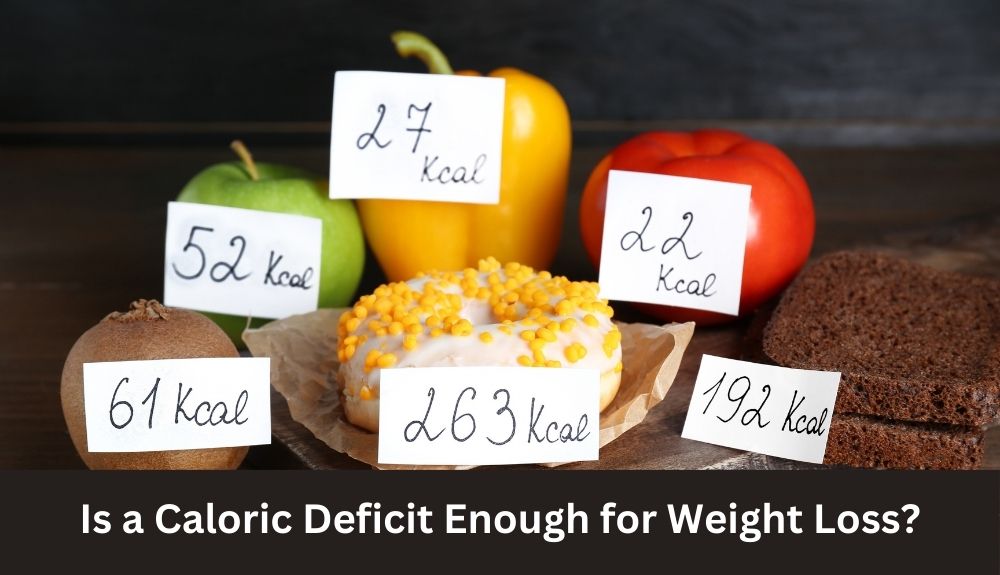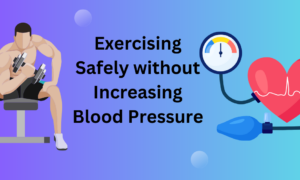Are you tired of trying to lose weight but not seeing the results you want? Do you feel overwhelmed by the countless diets and strategies out there, unsure of what will actually work?
Enter the concept of caloric deficit. It’s a scientifically backed principle that can revolutionize your weight loss journey. By understanding how it works and implementing it effectively, you can achieve your goals safely and efficiently.
In this blog, we will explore the fascinating science behind weight loss and delve deep into the concept of caloric deficit. We will explain how reducing your calorie intake compared to your energy expenditure can lead to fat loss and ultimately, a healthier body. Along the way, we’ll provide practical tips, guidelines, and calculations to help you create and maintain a healthy deficit.
Stay tuned as we debunk common myths, shed light on the impact of reduced calorie intake, and provide answers to frequently asked questions. Get ready to embark on a journey of understanding and empowerment as we uncover the secrets of successful weight loss through caloric deficit.
Keywords: caloric deficit, weight loss, calorie intake, energy expenditure, fat loss, weight loss journey, practical tips, guidelines, calculations, healthy deficit, myths, reduced calorie intake, frequently asked questions, understanding, empowerment
Introduction to Caloric Deficit
When it comes to weight loss, understanding the concept of a caloric deficit is crucial. The term “caloric deficit” refers to the state in which the number of calories consumed is lower than the number of calories burned. This creates an energy imbalance that prompts the body to utilize stored fat for fuel, leading to weight loss.
Creating a caloric deficit is vital because it addresses the fundamental principle of weight loss, which is the energy balance equation. By consuming fewer calories than your body needs, you force it to tap into its fat stores for energy, resulting in a gradual decrease in body weight.
In this article, we will delve deeper into the science behind a caloric deficit and explore the various strategies to achieve it effectively. This comprehensive guide will cover topics such as calculating calorie needs, creating a caloric deficit through diet and exercise, potential risks of insufficient calorie intake, and answers to frequently asked questions.
By the end of this article, you will have a clear understanding of how a caloric deficit plays a significant role in achieving your weight loss goals safely and effectively. Let’s jump right in and explore the science behind this fundamental principle.
What is Caloric Deficit?
A caloric deficit is a key concept in the science of weight loss. It refers to the state where you consume fewer calories than your body requires to maintain its current weight. This imbalance between energy intake and expenditure forces your body to tap into its stored fat reserves for fuel, resulting in weight loss. Understanding caloric deficit is crucial to achieving your weight loss goals safely and effectively.
The Concept of Energy Balance
To comprehend caloric deficit, it’s important to grasp the concept of energy balance. Energy balance is the equilibrium between the calories you consume through food and the calories you burn through physical activity and bodily functions. When energy intake exceeds energy expenditure, you’re in a state of positive energy balance, leading to weight gain. Conversely, when energy expenditure surpasses energy intake, you enter a negative energy balance or caloric deficit, promoting weight loss.
Creating a Caloric Deficit
Creating a caloric deficit requires a strategic reduction in calorie intake. The widely accepted guideline for weight loss is to aim for a calorie deficit of 500 to 1000 calories per day, which can result in a gradual and sustainable weight loss of 1 to 2 pounds per week. It’s essential to strike a balance and avoid excessively restrictive diets, as extremely low-calorie intake can have negative effects on your health and slow down your metabolic rate.
To determine your calorie needs, you can start by calculating your Basal Metabolic Rate (BMR), which represents the energy required for essential bodily functions at rest. You can use online calculators or consult a registered dietitian for a more precise estimation. Additionally, consider your physical activity level when determining your daily calorie target. Moderate exercise can further contribute to a caloric deficit and enhance weight loss.
Importance of Caloric Deficit for Weight Loss
Maintaining a caloric deficit is crucial for weight loss because it forces your body to utilize stored fat as a source of energy. While exercise plays an important role in weight loss, creating a caloric deficit through diet is often more effective, as it’s easier to consume fewer calories compared to burning off excessive calories through physical activity alone.
Remember, achieving and maintaining a healthy caloric deficit requires a well-balanced diet consisting of nutrient-dense whole foods. Monitoring portion sizes, practicing mindful eating, and choosing nutritious options can help you create a sustainable caloric deficit without compromising essential nutrients.
By understanding the concept of caloric deficit and implementing it in a balanced manner, you can optimize your weight loss journey while ensuring optimal health and wellbeing.
How to Calculate Calorie Needs

Calculating your calorie needs is a crucial step in achieving a caloric deficit for effective weight loss. By understanding your Basal Metabolic Rate (BMR) and physical activity level, you can determine the appropriate calorie intake for your goals.
Basal Metabolic Rate (BMR)
Your BMR refers to the number of calories your body needs to maintain essential functions at rest. It accounts for processes like breathing, digestion, and circulation. Several formulas can estimate your BMR, including the widely used Harris-Benedict equation.
To calculate your BMR using the Harris-Benedict equation, follow these steps:
1. For men, use the formula: BMR = 88.362 + (13.397 × weight in kg) + (4.799 × height in cm) – (5.677 × age in years).
For women, use the formula: BMR = 447.593 + (9.247 × weight in kg) + (3.098 × height in cm) – (4.330 × age in years).
2. Once you have your BMR, you need to consider your physical activity level.
Physical Activity Level
Your physical activity level accounts for the calories burned through exercise and daily activities. It is important to choose the correct activity level to determine your total daily energy expenditure (TDEE) accurately. The following activity levels can help guide you:
1. Sedentary: Little to no exercise or desk job with minimal movement. Multiply your BMR by 1.2.
2. Lightly active: Light exercise or sports 1-3 days a week. Multiply your BMR by 1.375.
3. Moderately active: Moderate exercise or sports 3-5 days a week. Multiply your BMR by 1.55.
4. Very active: Hard exercise or sports 6-7 days a week. Multiply your BMR by 1.725.
5. Extremely active: Very intense exercise, physical job, or training twice a day. Multiply your BMR by 1.9.
Multiply your BMR by the appropriate activity level to determine your TDEE. To create a caloric deficit, aim to consume fewer calories than your TDEE while still meeting your nutritional needs.
Remember, calculating calorie needs is just the starting point. Adjustments may be necessary based on your progress, body composition, and overall health. Consulting with a registered dietitian or healthcare professional can provide personalized guidance to optimize your weight loss journey.
Creating a Caloric Deficit Through Diet
When it comes to achieving weight loss goals, creating a caloric deficit through dietary modifications is a crucial factor. By controlling your calorie intake, you can effectively tip the energy balance scale in favor of weight loss. Here are some strategies and tips to help you create a caloric deficit through your diet:
1. Portion Control
One effective way to reduce your calorie intake is by practicing portion control. Be mindful of the quantities you consume and aim to eat smaller portions of high-calorie foods. Using smaller plates and bowls can trick your mind into feeling satisfied with less food, helping you create a caloric deficit without feeling deprived.
2. Mindful Eating
Practicing mindful eating can also aid in creating a caloric deficit. Slow down your eating pace, savor each bite, and pay attention to your body’s hunger and fullness cues. This can prevent overeating and help you make conscious food choices, ultimately reducing your overall calorie intake.
3. Choose Nutrient-Dense Foods
Opting for nutrient-dense foods is key to creating a caloric deficit without compromising your nutritional needs. Focus on incorporating plenty of fruits, vegetables, whole grains, lean proteins, and healthy fats into your meals. These foods provide essential vitamins, minerals, and fiber while being lower in calories.
4. Limit Highly Processed Foods
Minimize your consumption of highly processed foods that are often packed with added sugars, unhealthy fats, and empty calories. These foods can contribute to excessive calorie intake without providing substantial nutritional value. Instead, prioritize whole, unprocessed foods that offer greater satiety and nutrient density.
5. Stay Hydrated
Drinking an adequate amount of water can help you manage your calorie intake. Often, we confuse thirst with hunger, leading to unnecessary snacking. By staying hydrated, you can differentiate between true hunger and thirst, potentially reducing unnecessary calorie consumption.
Remember, creating a caloric deficit through diet is not about extreme restriction; it’s about finding a healthy balance. It’s essential to consult with a registered dietitian or nutritionist to personalize your caloric deficit plan based on your individual needs and preferences.
By adopting these dietary modifications and consistently adhering to them, you can successfully create a caloric deficit that supports your weight loss goals. However, it’s important to note that diet alone may not be sufficient for long-term weight maintenance. Combining dietary changes with regular exercise and a holistic approach to overall lifestyle is key to sustainable weight loss.
Keep reading to explore how exercise plays a role in caloric deficit and weight loss in our next section.
Creating a Caloric Deficit Through Exercise
Exercise plays a crucial role in achieving a caloric deficit and promoting weight loss. By engaging in physical activity, you can burn calories and increase your energy expenditure, contributing to a negative energy balance. Here, we will explore various types of exercises that can help you create a caloric deficit while providing practical recommendations and safety considerations.
Types of Exercises for Caloric Deficit
1. Cardiovascular exercises: Activities such as running, cycling, swimming, and aerobic classes are effective in burning calories. These exercises elevate your heart rate and engage large muscle groups, leading to increased calorie burn.
2. High-intensity interval training (HIIT): HIIT involves alternating between intense bursts of exercise and short recovery periods. This type of workout is known for its ability to burn calories both during and after the session, thanks to the increased metabolic rate.
3. Strength training: Building muscle mass is beneficial for weight loss because it helps boost your resting metabolic rate. Strength training exercises like lifting weights, using resistance bands, or performing bodyweight exercises can create a caloric deficit by increasing muscle mass and enhancing overall energy expenditure.
Recommendations for Effective Exercise
1. Mix it up: Vary your exercise routine to prevent boredom and challenge different muscle groups. This variety can also help prevent plateaus in weight loss by continuously stimulating your body.
2. Set realistic goals: Start with achievable exercise goals and gradually increase the intensity and duration as your fitness level improves. This approach ensures safety and prevents overexertion.
3. Prioritize consistency: Regular exercise is key to maintaining a caloric deficit. Aim for at least 150 minutes of moderate-intensity aerobic activity or 75 minutes of vigorous-intensity aerobic activity per week, along with strength training exercises twice a week.
4. Safety considerations: Always warm up before exercising and cool down afterward to prevent injury. If you have any underlying health conditions or concerns, consult with a healthcare professional or certified trainer before starting a new exercise program.
Is a Caloric Deficit Enough for Weight Loss?

While a caloric deficit is undeniably crucial for weight loss, it is not the sole factor that determines success in your journey. Achieving sustainable and healthy weight loss requires considering other essential aspects of your lifestyle. Here are some key factors to keep in mind:
Hormonal Balance:
Hormones play a significant role in regulating metabolism, appetite, and fat storage. Imbalances in hormones such as insulin, cortisol, and leptin can hinder weight loss progress. Adopting a balanced and nutrient-rich diet, managing stress levels, and getting quality sleep can help optimize hormonal functioning.
Sleep Quality:
Inadequate sleep disrupts hormone regulation, impairs metabolism, and increases cravings for high-calorie foods. Prioritizing quality sleep by establishing a consistent bedtime routine and creating a sleep-friendly environment supports weight loss efforts.
Overall Lifestyle:
Weight loss is not merely a numbers game. It involves adopting a mindful and sustainable approach to your overall lifestyle. Incorporating regular physical activity that you enjoy, managing stress through relaxation techniques or therapy, and cultivating healthy habits like staying hydrated and managing portion sizes are all vital components of a successful weight loss journey.
Remember, a holistic approach to weight loss considers not only the quantity of calories consumed but also the quality of food, hormonal balance, sleep, and overall well-being. By striving for balance in these areas, you can optimize your chances of achieving long-term weight loss and maintaining a healthier lifestyle.
Risks of Insufficient Caloric Intake
Severely restricting calorie intake can have detrimental effects on your overall health and well-being. While creating a caloric deficit is essential for weight loss, it’s crucial to do so in a safe and sustainable manner. Here are some of the risks and negative impacts associated with insufficient caloric intake:
1. Nutrient Deficiencies: Drastically cutting calories can lead to inadequate intake of essential nutrients like vitamins, minerals, and macronutrients. This can result in deficiencies and impair the proper functioning of your body, leading to fatigue, weakened immune system, and other health complications.
2. Muscle Loss: Insufficient calorie intake can cause your body to break down muscle tissue for energy, especially if you’re not consuming enough protein. This can result in a loss of lean muscle mass and a decrease in your metabolic rate, making it harder to lose weight in the long run.
3. Metabolic Slowdown: Consistently consuming too few calories can trigger a metabolic slowdown, as your body tries to conserve energy. This can make it harder for you to lose weight and can even lead to weight regain once you stop restricting your intake.
4. Psychological Impact: Severely restricting calories can negatively impact your mental health, causing irritability, mood swings, and an unhealthy relationship with food. It can also lead to obsessive thoughts about eating, guilt after consuming even small amounts of food, and the development of disordered eating patterns.
To ensure a safe and effective weight loss journey, it’s essential to create a calorie deficit within a reasonable range and focus on consuming a well-balanced diet that meets your nutritional needs. Consulting with a registered dietitian or healthcare professional can provide personalized guidance and support throughout your weight loss journey.
Remember, it’s important to prioritize your overall health and well-being over rapid weight loss. Aim to make sustainable lifestyle changes that promote long-term success and maintain a healthy calorie deficit that supports your individual needs and goals.
Conclusion
Severely restricting calorie intake can lead to nutrient deficiencies, muscle loss, metabolic slowdown, and negative psychological impacts. It’s crucial to create a safe and sustainable caloric deficit that allows for gradual and healthy weight loss. Prioritize your overall well-being and consult with professionals to ensure a successful weight loss journey.





















